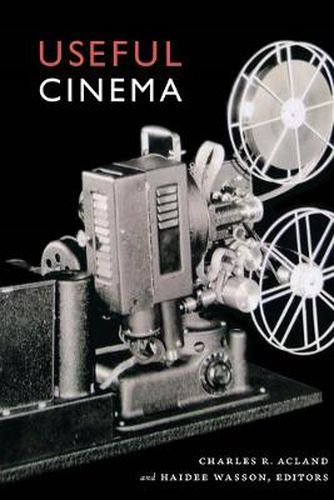Readings Newsletter
Become a Readings Member to make your shopping experience even easier.
Sign in or sign up for free!
You’re not far away from qualifying for FREE standard shipping within Australia
You’ve qualified for FREE standard shipping within Australia
The cart is loading…






By exploring the use of film in mid-twentieth-century institutions, including libraries, museums, classrooms, and professional organizations, the essays in Useful Cinema show how moving images became an ordinary feature of American life. In venues such as factories and community halls, people encountered industrial, educational, training, advertising, and other types of useful cinema. Screening these films transformed unlikely spaces, conveyed ideas, and produced subjects in the service of public and private aims. Such functional motion pictures helped to shape common sense about cinema’s place in contemporary life. Whether measured in terms of the number of films shown, the size of audiences, or the economic activity generated, the non-theatrical sector was a substantial and enduring parallel to the more spectacular realm of commercial film. In Useful Cinema, scholars examine organizations such as UNESCO, the YMCA, the Amateur Cinema League, and the Metropolitan Museum of Art. They also consider film exhibition sites in schools, businesses, and industries. As they expand understanding of this other American cinema, the contributors challenge preconceived notions about what cinema is.
Contributors. Charles R. Acland, Joseph Clark, Zoe Druick, Ronald Walter Greene, Alison Griffiths, Stephen Groening, Jennifer Horne, Kirsten Ostherr, Eric Smoodin, Charles Tepperman, Gregory A. Waller, Haidee Wasson. Michael Zryd
$9.00 standard shipping within Australia
FREE standard shipping within Australia for orders over $100.00
Express & International shipping calculated at checkout
By exploring the use of film in mid-twentieth-century institutions, including libraries, museums, classrooms, and professional organizations, the essays in Useful Cinema show how moving images became an ordinary feature of American life. In venues such as factories and community halls, people encountered industrial, educational, training, advertising, and other types of useful cinema. Screening these films transformed unlikely spaces, conveyed ideas, and produced subjects in the service of public and private aims. Such functional motion pictures helped to shape common sense about cinema’s place in contemporary life. Whether measured in terms of the number of films shown, the size of audiences, or the economic activity generated, the non-theatrical sector was a substantial and enduring parallel to the more spectacular realm of commercial film. In Useful Cinema, scholars examine organizations such as UNESCO, the YMCA, the Amateur Cinema League, and the Metropolitan Museum of Art. They also consider film exhibition sites in schools, businesses, and industries. As they expand understanding of this other American cinema, the contributors challenge preconceived notions about what cinema is.
Contributors. Charles R. Acland, Joseph Clark, Zoe Druick, Ronald Walter Greene, Alison Griffiths, Stephen Groening, Jennifer Horne, Kirsten Ostherr, Eric Smoodin, Charles Tepperman, Gregory A. Waller, Haidee Wasson. Michael Zryd